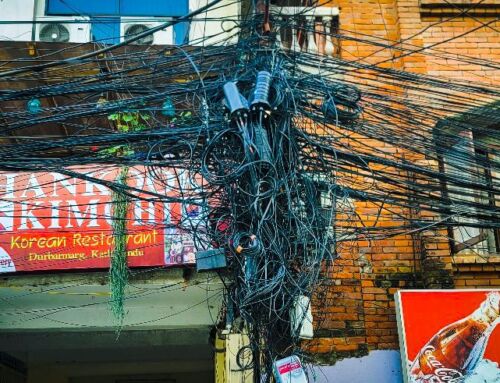View by Topic
Recent Articles
-
EPA Designates PFOA and PFOS as Hazardous Substances under Superfund LawSaturday, April 20th, 2024
-
Federal Government Finalizes New Efficiency Standards for LightbulbsSaturday, April 13th, 2024
-
2024 IECC is Final After Addressing Preemption IssuesSaturday, April 6th, 2024
-
Settlement Portends Broad Failure in Attempts to Ban Natural GasSaturday, March 30th, 2024
-
SEC Climate Disclosure Rule Stay and Venue Now in the 8th CircuitSaturday, March 23rd, 2024
View by Month/Year
“Green Building Law Update” Headlines
Recent Articles & News from
Stuart Kaplow’s blog
at GreenBuildingLawUpdate.com
- EPA Takes Action: PFOA and PFOS Now Hazardous Substances Under Superfund Law April 21, 2024
- Shedding Light on the Future: The Evolution of Lightbulbs in the Wake of New Energy Efficiency Standards April 14, 2024
- 2024 International Energy Conservation Code is Final After Addressing Preemption April 7, 2024
- Settlement Portends Broad Failure in Attempts to Ban Natural Gas March 31, 2024
Subscribe to the Green Building Law Update!
Stuart Kaplow brings his expertise and extensive experience to the table with his unique digital publication, "Green Building Law Update". Subscribers receive regular updates to keep them informed about important issues surrounding Environmental Law, Green Building & Real Estate Law, as well as the emerging demand for Environmental Social Governance (ESG).
Get fresh content through the lense of Stuart Kaplow's cutting-edge expertise, innovative commentary and insider perspective. Don't miss another issue! Subscribe below.

Refocus the EPA through the Lens of Green Building
In a time of changing national environmental agendas, including the Trump Pence Transition Team announced plan “to refocus the EPA” it is an ideal moment to articulate how green building is “the” ideal means of voluntarily mitigating the negative impacts that human activity has on the planet.
While buildings and the construction of buildings provide countless benefits to human beings far beyond merely providing shelter, voluntary stewardship of the environment through green building can save the planet.
Given the broad environmental impact that buildings have on the planet, it is not necessary to go down the rabbit hole of a political debate with the new Administration over global warming. Moreover, today the debate about climate change has shifting away from a discussion of costs and risks toward the question of how to capitalize on exciting opportunities.
While there is no one homogenized building type, we regularly articulate that green buildings can significantly reduce energy use, water use, solid waste and greenhouse gas emissions.
By way of example, compared to the average commercial building, an oft quoted study found the LEED Gold buildings in the U.S. General Services Administration’s portfolio generally: Consume 25% less energy, use 11% less potable water, have 19% lower maintenance costs, 27% higher occupant satisfaction, and emit 34% lower greenhouse gas emissions.
But at a time when many in society describe environmental matters apocalyptically, as if human existence on the planet is at risk we need to talk more than only about reducing energy use, water use, solid waste and greenhouse gas emissions. And green buildings do so much more.
Such is not a new idea. In fact in the early 1990s the U.S. National Institute of Standards and Technology (NIST) began the Building for Environmental and Economic Sustainability (known to most of us simply as BEES) project. (Some will remember the first pre Greenbuild USGBC green building convention in 1994 hosted by NIST.)
The first version of LEED allocated points based substantially upon the BEES environmental impacts. (An updated version of BEES is expected in 2017.)
Later, LEED version 2009 reweighted the solutions to environmental impacts using the U.S. EPA Tool for the Reduction and Assessment of Chemical and other environmental Impacts (TRACI). Such was not a leap because (the previously utilized) BEES is based upon TRACI.
The current 10 TRACI impacts are:
- Ozone Depletion
- Global Climate
- Acidification
- Eutrophication
- Smog Formation
- Human Health Particulate
- Human Health Cancer
- Human Health Noncancer and
- Ecoxicity
BEES also assesses Indoor Air Quality, an impact not included in TRACI because it is unique to the building industry.
Green building provides powerful improvements to each and all of those 11 environmental impacts.
Interestingly, the new LEED version 4 describes the benefits of green building in terms of “Impact Categories.” It seeks to answer the questions, “What should a LEED project accomplish?” with a very much stylized and narrowed down list of environmental impacts: Reverse Contribution to Global Climate Change; Enhance Individual Human Health and Well-Being; Protect and Restore Water Resources; Protect, Enhance and Restore Biodiversity and Ecosystem Services; Promote Sustainable and Regenerative Material Resources Cycles; Build a Greener Economy; and, Enhance Social Equity, Environmental Justice, and Community Quality of Life. It is not clear why the USGBC abandoned the standardized TRACI listing in favor of a proprietary test, but the positive environmental impacts of building green remain.
And while some desire a hyperbolic government response to the environmental issues of the day, even at the risk of changing our way of life, the recent U.S. election has shown, today, most Americans have a deep distrust of the federal government and of far reaching public programs. An ideal solution then, to address environmental issues, is for government to make it possible for business to voluntarily build green including the greening of existing buildings.
As the nation refocuses environmental policy beginning in 2017, voluntary green building is the solution to many of the very real environmental impacts of the day.









